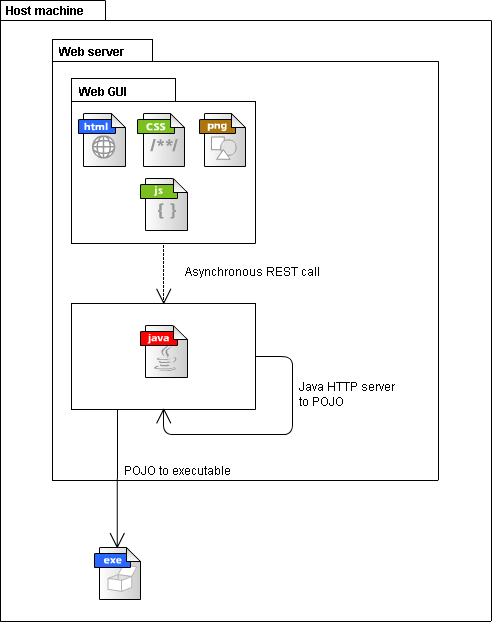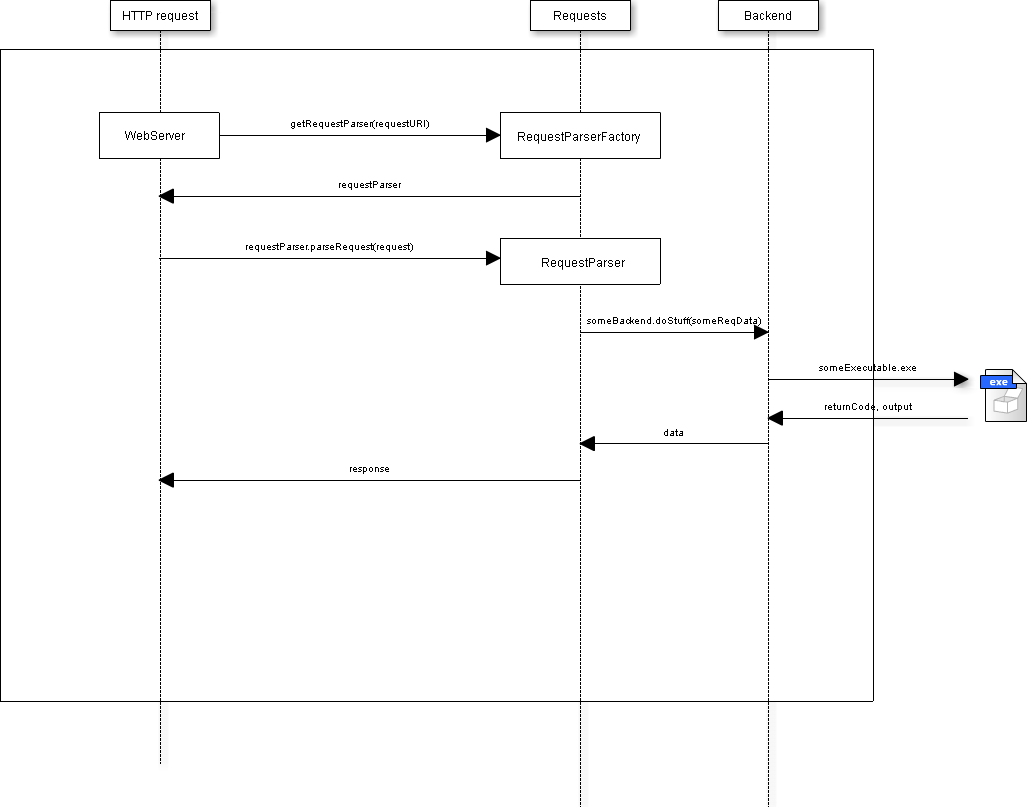Process Controller
Controlling processes and maintaining system status can be a tedious task when done through multiple commands in a terminal. To ease the workflow, Process Controller adds a customizable web GUI to handle all commands.
Technical flow

Message flow in Process Controller
Process Controller's UI is an HTML web GUI with a logic layer written in JavaScript. The JavaScript calls a light-weight Java server through an HTTP REST API. All calls are asynchronous AJAX requests, thus enabling long-running processes (it is in the nature of asynchronous calls to never time out). The web GUI is also hosted by the Java server to avoid cross-domain problems.

Internal HTTP request flow in Process Controller
A few things to consider: This project should be run on a (non-production) machine to control the state of the machine. The server has no built-in security (HTTP instead of HTTPS, no file access checks, etc...). For more things see possible TODOs.
How to set up the project
Clone the project to your desired directory. Create your desired RequestParser(s) to parse incoming HTTP requests, see package demo.model.web.requestparser for different types of parsers. Edit model.web.RequestParserFactory by connecting your newly created parsers to a regex matching their supported request URIs. In your RequestParsers, return the data that the REST should provide. This can be done by implementing a controller, there are multiple examples in demo.model.controller. Edit the web GUI to call your REST API end points. If needed, edit the properties in system.properties.
Deploy the server by running Main.main().
Properties
webserver.port specifies webserver port (default value=8000)
webserver.indexpage specifies index page of webserver (default value=index.html)
exec.path specifies path to executable (default value=C:/cygwin/bin/bash.exe)
system.encoding specifies character encoding of text used in the system (default value=UTF-8)
system.multithreaded specifies whether requests should be handled in parallel (default value=true)
Demo
Possible TODOs
- HTTPS
Q/A
Q: Can I use this as an asynchronous terminal editor?
A: No, the server can only handle one process at the time. (See possible TODOs)
Q: Can I send input to a process after starting it?
A: Nope.
Q: Can I see output in real time from a process?
A: Nope, HTTP does not support streaming responses.
Q: Why would I use this instead of a real terminal?
A: It is a (fairly) simple way to control processes, especially long-runnings commands like "start/stop/compile some program". However, if you are more into terminals and feel that typing commands is sufficient, this project is completely unnecessary.
Q: Damn, do I have to code this much?
A: Yes. This is basically just a shell (yes, pun intended) for any implementation.